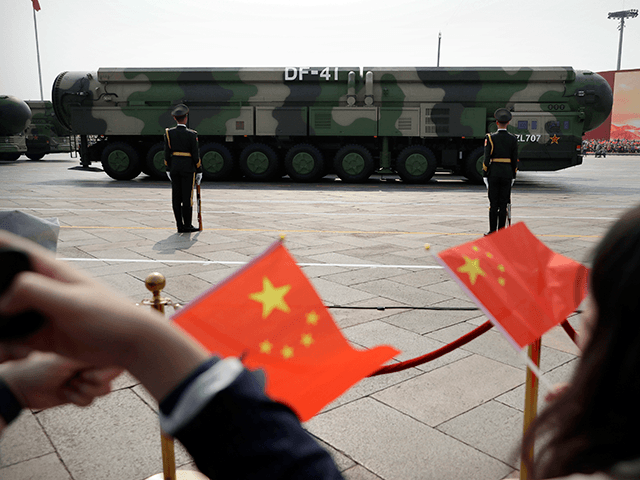A study of satellite images produced by the James Martin Center for Nonproliferation Studies in California this week revealed China is constructing over 100 new silos for intercontinental ballistic missiles (ICBM) in the northwestern desert of Gansu province.
“The acquisition of more than 100 new missile silos, if completed, would represent a historic shift for China, a country that is believed to possess a relatively modest stockpile of between 250 and 350 nuclear weapons. The actual number of new missiles intended for those silos is unknown but could be much smaller. China has deployed decoy silos in the past,” the Washington Post noted Wednesday.
The James Martin Center spotted 119 construction sites laid out in a grid over hundreds of square miles near the Chinese city of Yuman, with each launch site separated from its closest neighbor by at least two miles.
About two dozen more silos are being built in other locations. The sites are “nearly identical” to each other – and to existing Chinese nuclear missile launch facilities. The new silos are big enough to hold Chinese DF-41 ICBMs, a relatively new design capable of reaching the United States with multiple nuclear warheads.
The reason the “actual number of new missiles” is unknown is that only some of the silos could be loaded with missiles at any given time, making it difficult for adversaries to know which silos to target in a time of war.
This suggests China’s new silos are meant as a “first strike deterrent” against Western powers, similar to the missile shell games played with the Soviet Union during the Cold War. U.S. analysts say China is also investing heavily in mobile missile launchers that would be difficult to hit with a pre-emptive strike.
The latest review of satellite images was prompted by rumors that China was looking to double its nuclear missile inventory, Jeffrey Lewis of the James Martin Center wrote in Foreign Policy on Wednesday. When the Center decided to search for missile silos, it found a shocking number of them under construction in Yumen and other remote locations, along with underground command bunkers and other infrastructure.
“The scale of construction is startling, and China broke ground on the site only a few months ago, in February,” Lewis noted.
Lewis said that even if many of the silos are intended to stand empty as decoys, the astoundingly large and swift construction of launch facilities by China is an “alarming development” because even though American and Russia have much larger nuclear warhead inventories today, China is quickly approaching the level of capability Russia had during the Cuban Missile Crisis of October 1962, a potentially apocalyptic confrontation.
This is especially unsettling because Lewis noted that unlike the U.S. and U.S.S.R. during their long twilight confrontation, China had displayed zero interest in joining arms control negotiations. He speculated Beijing would be unlikely to accept limits on its nuclear arms unless the U.S. accepts limits on missile defense, a current American advantage that leads China and Russia to feel they need more missiles to offer a credible nuclear deterrent.
“We’re stumbling into an arms race that is largely driven by U.S. investments and missile defense,” Lewis told the Washington Post.
Some defense analysts see little reason for concern in China’s nuclear buildup, noting the United States still has enormous leads in nuclear inventory and missile quality, but others note that America is now in a strategic competition against China plus Russia, not a three-way standoff.
Chinese dictator Xi Jinping and Russian leader Vladimir Putin held a meeting on Monday in which they extended their 20-year friendship treaty, celebrated the growing closeness of their authoritarian regimes, and promised not to “target strategic nuclear missiles against each other.”

COMMENTS
Please let us know if you're having issues with commenting.